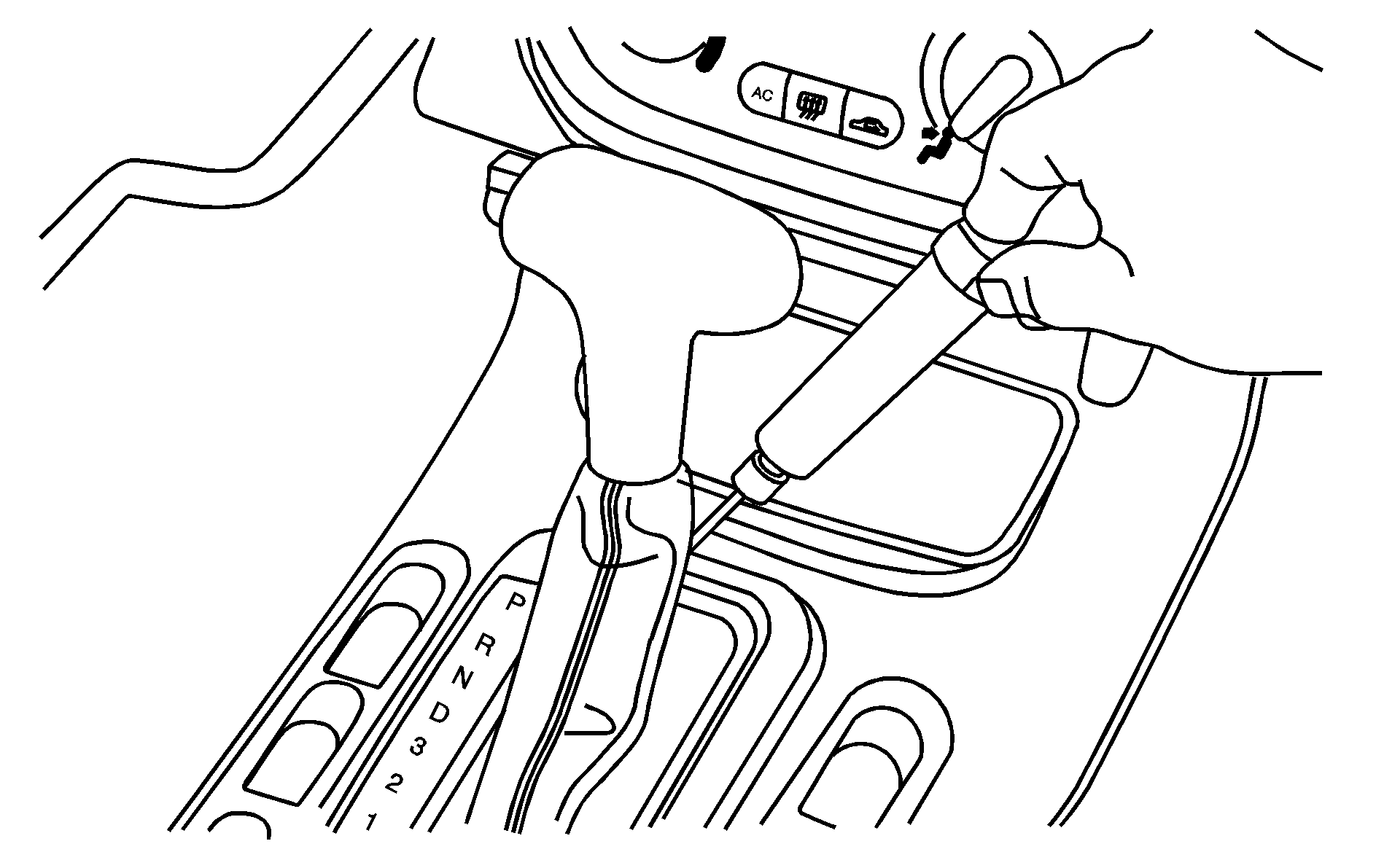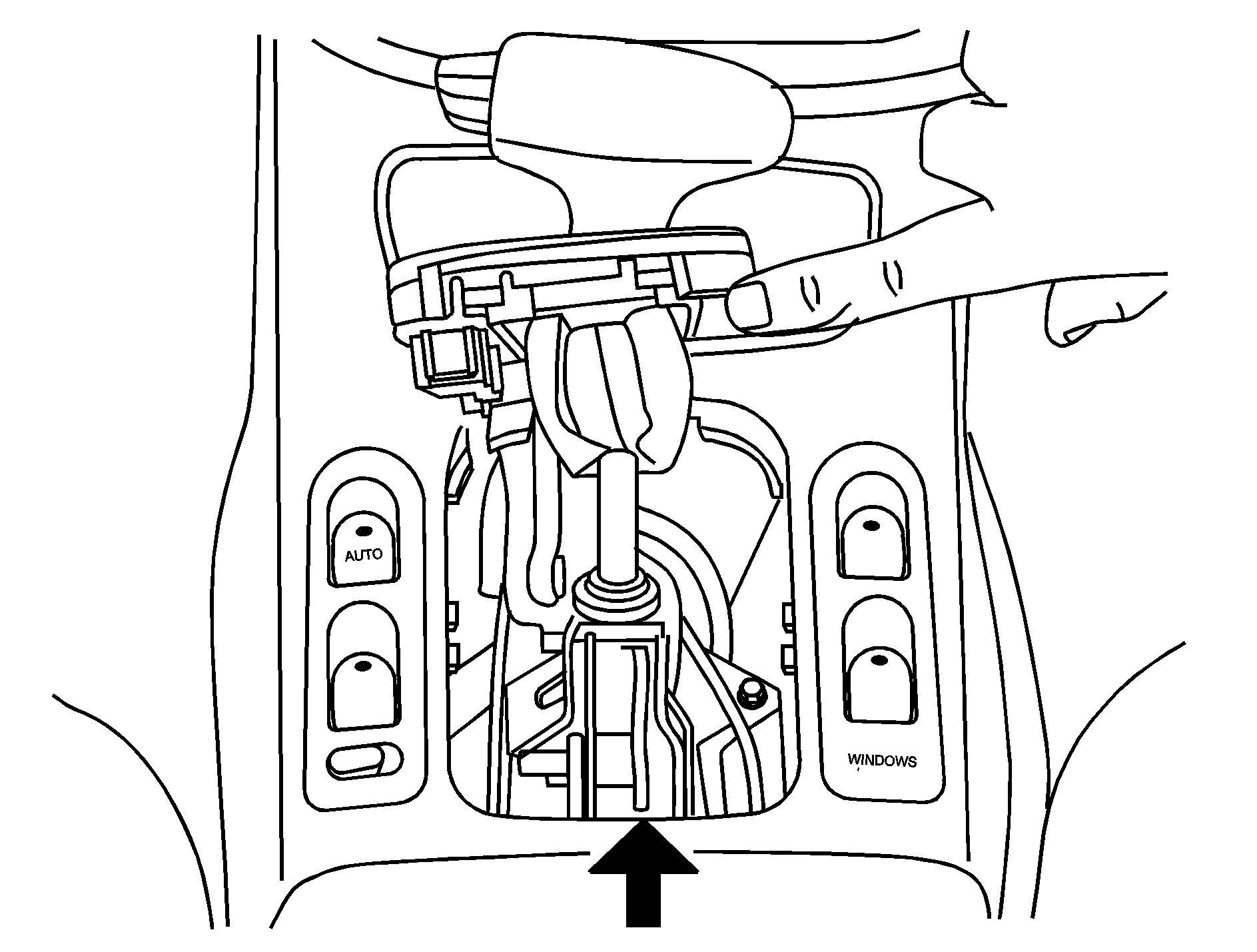Your vehicle has an automatic transaxle shift lock control system. You have to fully apply your regular brakes before you can shift from PARK (P) when the ignition is in RUN. See Automatic Transaxle Operation .
If you cannot shift out of PARK (P), ease pressure on the shift lever -- push the shift lever all the way into PARK (P), as you maintain brake application. Then move the shift lever into the gear you wish. (Press the shift lever button before moving the shift lever).
If you ever hold the brake pedal down but still can't shift out of PARK (P), try this:
- Ease pressure on the shift lever by moving the shift lever all the way into the "P" (Park) position and releasing the button on the shift lever.
- Press the button on the shift lever again and move the shift lever to the desired position.
Torque Lock (Automatic Transaxle)
If you are parking on a hill and you don't shift your transaxle into PARK (P) properly, the weight of the vehicle may put too much force on the parking pawl in the transaxle. You may find it difficult to pull the shift lever out of PARK (P). This is called "torque lock." To prevent torque lock, set the parking brake and then shift into PARK (P) properly before you leave the driver's seat. To find out how, see Shifting Into Park .
When you are ready to drive, move the shift lever out of PARK (P) before you release the parking brake.
If torque lock does occur, you may need to have another vehicle push yours a little uphill to take some of the pressure from the parking pawl in the transaxle, so you can pull the shift lever out of PARK (P).
Shift Interlock By-Pass (Automatic Transaxle)
If for some reason the shifter is not released when you apply the brake, or if service or towing requires the car to be shifted out of "P" (Park) without running the engine, turn the ignition, key to the "ACC" (Accessory) position. Apply the regular brakes and then shift to "N" (Neutral). The vehicle may now be operated normally.
If you have turned the ignition key to the "ACC" (Accessory) position and still can't shift out of "P" (Park), try this:
- Insert a thin-bladed fathead screwdriver between the shift lever indicator assembly and the console above the shifter.
- Push the handle of the flathead screwdriver toward the front of the vehicle to pry up the shift lever indicator assembly.
- Pull the front of the shift lever indicator assembly up and then forward to disengage it.
- Place your foot on the brake pedal and pull up and hold the white plastic lever, which is located behind the shift lever shaft.
- Press button shift lever out of "P" (Park).


Remember to put the shifter trim plate back into its original position when you're done and have your vehicle serviced.
